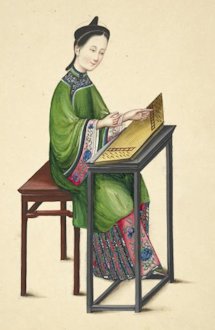
In the Chou dynasty (c. 1027-256 BC) music was one of the four subjects that the sons of noblemen and princes were required to study, and the office of music at one time comprised more than 1400 people. Although much of the repertoire has been lost, some old Chinese ritual music ( yayue ) is preserved in manuscripts. During the Qin dynasty (221-206 BC) music was denounced as a wasteful pastime; almost all musical books, instruments, and manuscripts were ordered destroyed. Despite this severe setback Chinese music experienced a renaissance during the Han dynasty (206 BC-AD 220), when a special bureau of music was established to take charge of ceremonial music. During the reign (AD 58-75) of Liu Zhang the Han palace had three orchestras comprising in all 829 performers. One orchestra was used for religious ceremonies, another for royal archery contests, and the third for entertaining the royal banquets and harem.
During the Tang dynasty (618-906) Chinese secular music ( suyue ) reached its peak. Emperor Tai Zong (597-649) had ten different orchestras, eight of which were made up of members of various foreign tribes; all the royal performers and dancers appeared in their native costumes. The imperial court also had a huge outdoor band of nearly 1400 performers. Portions of Tang music are preserved in Japanese court music, or gagaku.